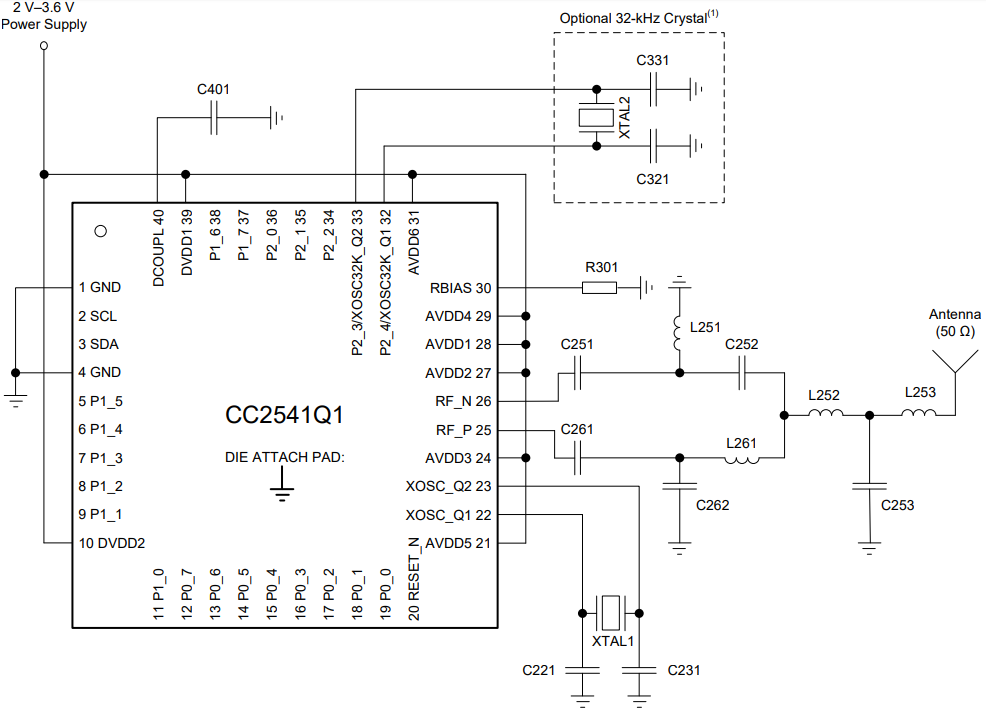CES 2021 brought us a host of futuristic gadgets for vehicles and interesting concept vehicles, and the upcoming CES 2022 show is not likely to disappoint. The electronics in these vehicles are reflective of broader automotive electronics trends that can’t be ignored by carmakers, OEMs, aftermarket electronics designers, and consumers. PCBs are the backbone of automotive electronics, and the proportion of electronics costs currently occupies ~40% of the cost of a new car. This is expected to reach 50% by 2030, just at the point where new consumer automobiles are projected to be partially or fully autonomous. If you were to look under the hood of a 1950’s Chevy, it would be hard to imagine that the automotive industry has come this far.
It’s not just the number of electronic components that is expected to continue increasing, it’s also the complexity of these systems, both in terms of hardware and embedded software. Beneath these statistics are several automotive electronics trends that will drive component needs for OEMs and aftermarket designers. Let’s look at how these trends are influencing the landscape in electronics systems for new and future automobiles.
Top Automotive Electronics Trends
The most prominent trend everyone is familiar with is the current automotive chip shortage, which has unfortunately spilled over into just about every other area of the electronics industry. Automotive electronics span multiple application areas, ranging from power to sensing and wireless communications.
Power Management for Electric Vehicles
As the infrastructure in economically advanced countries changes, and as newer battery systems are developed, we can continue to expect electric vehicles with longer range and faster charging times. This all relies on more advanced power management systems, which rely on a range of fundamental components. These components are not necessarily highly integrated as SoCs simply because they need to handle so much power, but high power systems may still need to operate with discrete components on dedicated modules.
Some of the major power systems appearing in electric vehicles include:
Wireless BMS for managing charge distribution in EV battery packs, as well as monitoring batteries and communicating data back to control units.
Emergence of V2G technologies and bidirectional charging in electric vehicles at charging stations.
Use of more advanced semiconductors with high operating temperature and high thermal conductivity for power MOSFETs.
Some typical components that will need to be used in these power management systems include a range of components for sense and control loops, such as current sense amplifiers. As EVs operate with battery packs at high voltage, components for ESD protection are also essential to protect circuits. Integrated power management ICs with multiple regulators (see the MC33PF8200A0ES from NXP below) are being used to control these systems, as well as automotive-qualified processors and a suite of ASICs.

The MC33PF8200A0ES application processor from NXP provides an integrated power management solution for automobiles.
Regarding power FETs that need to run at high power for charging/discharging management, SiC and GaN-SiC are ideal material platforms for these switching components. In particular, SiC is a wide indirect bandgap semiconductor (3.3 eV bandgap) that provides low losses during power conversion at relatively low switching frequency. It also has high thermal conductivity compared to Si, making it an ideal material for high power conversion tasks in electric vehicles. While these components were originally developed to target RF power applications, such as in newer mobile infrastructure, they are just as useful in power applications for electric vehicles. In fact, the first automotive-qualified GaN FET with an integrated driver was announced last year, and other companies have followed suit with their own components.
In-vehicle and Smart Infrastructure Networking
New cars are processing more data than ever before, and the amount of data they use will only increase. In-vehicle networking in consumer automobiles is currently below 1 Gbps over Ethernet, but Gigabit in-vehicle Ethernet and wirelessly connected devices within the vehicle will change the way data is collected and handled by vehicles, as well as the driver experience. In-vehicle networking and smart infrastructure networking are both huge opportunities for new automobiles and are seen as a new growth market by the automotive industry. In-vehicle networking alone is projected to become a $1.5 billion market by 2026, which will be facilitated by a host of integrated processors and SoCs.

The CC2541-Q1 from Texas Instruments is automotive qualified and is part of the SimpliLink platform for IoT products.
Implementing wireless spans beyond connecting drivers and infotainment with Bluetooth. In addition to wireless BMS designs as mentioned above, there is motivation to implement wireless connections in other areas of a vehicle. ECUs often need to be placed very close to the sensors and actuators they will interact with. The result is a need to add additional wiring for each ECU added to a new vehicle. As a result, the network harness in a modern automobile can include thousands of connections and span thousands of meters in length. Replacing wired interfaces with wireless connections reduces weight and system complexity, and it follows the current paradigm found in connected vehicles.
In order to enable more advanced ADAS, autonomous vehicles, and a range of new services originating inside and outside a vehicle, newer vehicles will also need to connect to each other, smart infrastructure systems, and even bikes and motorcycles. The current WLAN-based vehicle-to-everything (V2X) wireless standards are based on IEEE 802.11p, while other capabilities will rely on existing 4G or upcoming 5G cellular services. Components required for these systems include the following:
4G/4G LTE, and 5G transceivers, modems, and antenna modules
RF power amplifier ICs for Tx channels
RF transceiver ICs operating in a range of frequencies (WiFi, DSRC, dual-band pipes up to 5.9 GHz, etc.)
Until recently, there was some debate as to whether the 802.11p standard (known as dedicated short-range communication, or DSRC) or cellular would become the dominant protocol for inter-vehicle networking. As of October 2020, the FCC reallocated the 5.85 to 5.895 GHz spectrum to an unlicensed band. The rest of the original DSRC spectrum was allocated to newer C-V2X, which just happens to be standardized in 3GPP Release 14. This effectively killed DSRC, leaving C-V2X and 5G-enabled services as the upcoming technologies for connected vehicles and smart infrastructure.
Say Goodbye to 3G
My current car can act as a WiFi hotspot and connect to my cellular service over 4G LTE/5G (marketed as Connected Car services), and the car can then connect to my devices via Bluetooth. As 5G continues to roll out, the capabilities of your cellular services will continue to be mirrored in new automobiles. One service that likely won’t be available in newer automobiles is 3G-based navigation and safety services.
Telecoms are scheduled to switch off the 3G services that many cars use for navigation, crash detection, traffic visualization, and specialty services like BMW Assist and OnStar. In some ways, this is just a repeat of the 2G turnoff debacle from a decade ago. Some carriers are better equipped to handle the transition to new technologies than others, but car companies have been lax in informing drivers when their connected car services will shut down. For newer cars, expect to see a continued shift to newer wireless technologies to enable a cutting-edge user experience.

The OnStar system is just one of the 3G-enabled services that will soon sunset.
Sensors for Smart ADAS
Some experts say it will be approximately a decade before consumers can buy a self-driving car. There are many reasons for this, which largely revolve around the development of a suite of advanced algorithms for governing control and decision-making. However, there are other challenges that need to be solved at the hardware level. Then there are the regulatory challenges and infrastructure required to support autonomous vehicles. These challenges exist both within the vehicle, outside the vehicle, and in relation to other cars being driven by humans.
The current sensor landscape for ADAS involves some combination of ultrasonics, radar, and cameras, all of which need to connect to an ECU. Lidar may also become common in ADAS sensor networks as it enables depth mapping that is not possible with camera images. Lidar is interesting as it is not limited to use in automobiles, with the technology being useful for sensing and imaging in smart cities generally. Even though lidar was not the main focus of conversation in years past, companies are still pushing it as part of an advanced solution for smart ADAS systems as it provides higher resolution imaging and mapping to support radar and vision systems in new vehicles.
Components required for ADAS sensors span beyond the sensors themselves and include the following:
Lidar system components, including pulsed laser diodes
Multichannel ADCs and embedded processors for sensor fusion
Components for custom cameras, including CCD/CMOS sensor modules
Some sensors and their supporting components may need to communicate with each other over standard digital interfaces (I2C, SPI, CANBus, etc.), while analog sensors may use a standard 0/5 V/4-20 mA interface (e.g., environmental sensors).
Processing Power
Current cars contain somewhere in excess of 100 ECUs, and the number is only expected to increase. As the amount of data gathered and processed in automobiles increases, ECUs and other modules in the system will require more processing power in the form of MCUs and automotive-grade FPGAs. The exact size, speed, and location of these components is still an open question. Given the trend in integration seen in the specialty IC market, I would expect many manufacturers to start offering and/or marketing automotive-specific SoCs that integrate an MCU.
The range of wireless services, power management systems, and processing power required for new vehicles should reveal the complicated electronics landscape in new vehicles. It’s impossible to keep up with all automotive electronics trends, but designers that need to select components for these systems can get a complete view of the supply chain with a powerful electronics search engine. Chipmakers are likely to respond with specialty SoCs, similar to those for IoT and mobile products, and you can find these and other specialized components for new vehicles with the right search engine.
If you’re developing new solutions for the automotive industry, your first place to start seeking components is a powerful electronics search engine. Octopart provides a complete solution for supply chain management and component selection, including advanced filtration features to help you select exactly the components you need. Take a look at our integrated circuits page to get started on your search for the components you need.
Stay up-to-date with our latest articles by signing up for our newsletter.